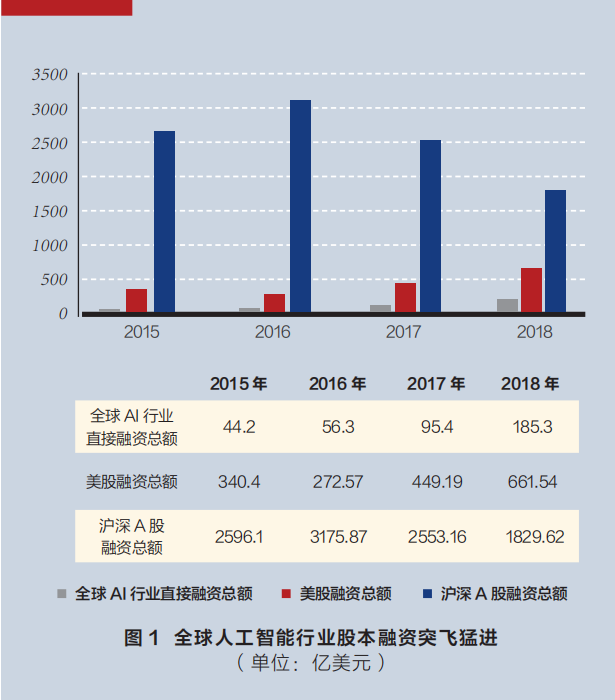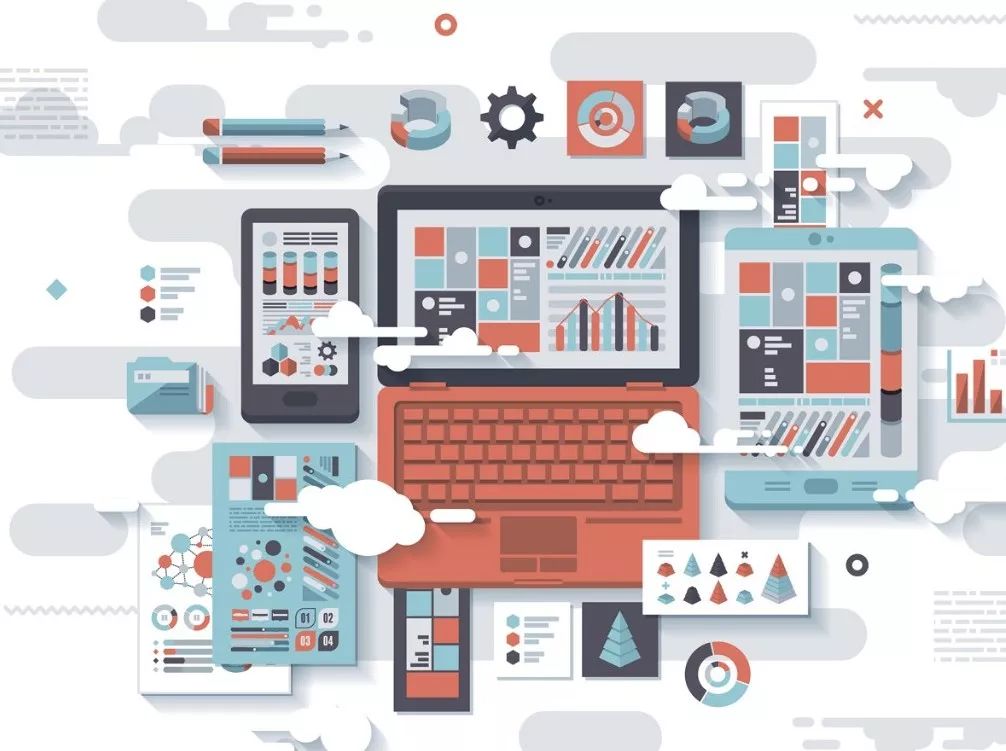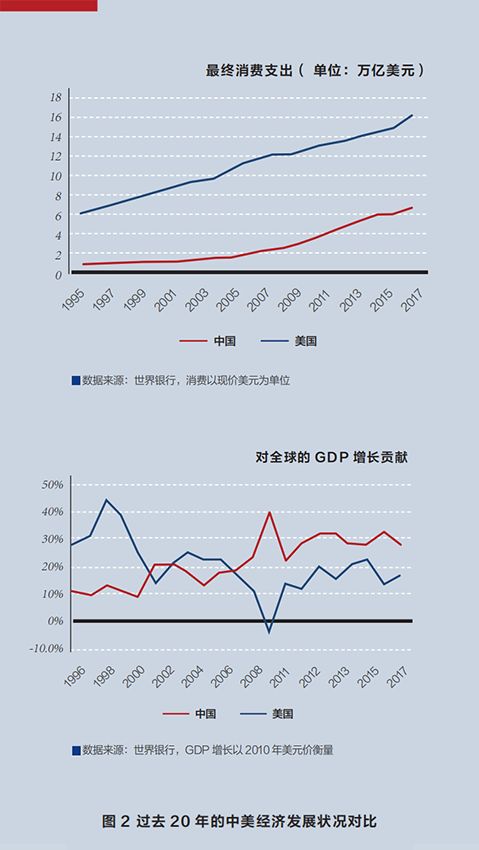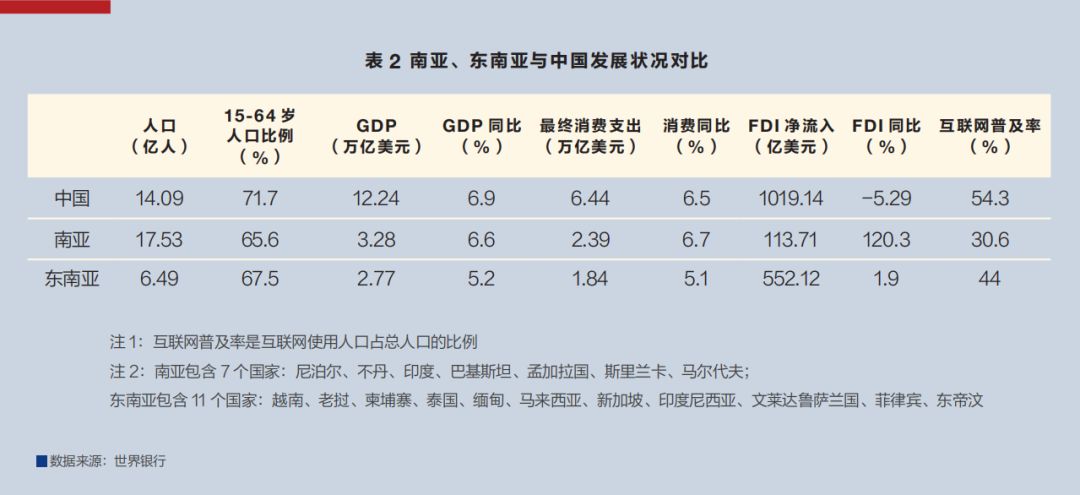Liang Xinjun: In the next fifteen years, blockchain restructures social production relations

Liang Xinjun, co-founder of Fosun Group

Our judgments about the future are always based on some basic assumptions that constitute the “anchor” of our value judgment. For example, whether it is an individual or an institutional investor, there is always a coordinate system or an "anchor point" of value judgment when investing. A company's price-earnings ratio (PE) and average price-to-book ratio (PB) are commonly used coordinate systems. After comprehensively comparing their profits, operating status, profit model, replacement cost, etc., it is finally determined whether the company is worth investing. .
- Encrypted synthetic assets DIY era is coming, UMA brings DeFi new explosion point?
- It’s better to chase the wind than to create the wind – to pay tribute to the participants in the Ant Blockchain Innovation Competition
- Babbitt Column | Cai Kailong: Is Bitcoin a safe haven asset?
However, as the following three major situations will undergo important changes in the next fifteen years, the “anchor” of value judgment will also drift. This means that all judgments based on current inertia will probably fail.
Productivity : In the next two or three years, artificial intelligence will begin to challenge the technical barriers of most industries, subvert the core competitiveness of enterprises, and many industries will be marginalized or even disappear.
Production relations : In the next five to seven years, the blockchain will soon subvert the industry ecology and enterprise supply chain advantages, and profoundly change the organizational form of enterprises and society.
Growth pole : In the next fifteen years, the growth of global economic growth-driven engines and consumer markets is slowly and steadily changing.

Artificial intelligence subverts industry productivity
The artificial intelligence technology is really attracting the attention of the world in 2016. That year, AlphaGo turned out to be a two-player professional Go player victory, shaking the world; AlphaGo Zero announced in 2017, compared with AlphaGo, its algorithm model has been greatly improved in the short term.
The evolution of artificial intelligence has benefited from advances in algorithmic models, improved chip performance, reduced computing power, increased supply, advances in data utilization technology, increased availability of data, and evolution of data-free anti-learning models. We can feel the rapid development of artificial intelligence in various industries (see Figure 1). It all happened only three years ago.

In 2016, the total amount of financing in the artificial intelligence industry increased by 30% to 40%. Since 2017, the total amount of financing has started to grow at a high rate, reaching an increase of about 80% for two consecutive years. As of 2018, the global artificial intelligence industry equity financing has reached 18.53 billion US dollars. It is foreseeable that in the next few years, the technological advantages of many industry giants will be broken due to the rapid momentum of artificial intelligence, and the industry structure will undergo fundamental changes.
The training of artificial intelligence requires massive data support. Based on the degree of data structuring, historical accumulation time, geographical breadth, industry depth, and open availability, artificial intelligence will be the first to be applied in areas with data advantages, such as Internet, finance, medical health and automotive.
A typical example of "artificial intelligence + Internet" is bytebeat, and its products include today's headlines, vibrato, and volcano videos. Today's headlines adopt the PGC model, that is, the platform and the user do not produce content, but capture content, and continuously learn the reading habits of Internet users through intelligent algorithms, and make personalized recommendations to users. The company has reached a pre-investment valuation of 75 billion U.S. dollars in seven years. It has not only emerged from the Internet market dominated by Baidu, Alibaba and Tencent, but also grows rapidly. The number of monthly active users reaches 1 billion, second only to WeChat. 1.08 billion.
Not only in the emerging industry of the Internet, but also in the traditional industry is being profoundly changed by artificial intelligence.
The entry point for "Artificial Intelligence + Cars" is autonomous driving technology. Thanks to advances in image recognition, radar and ultrasound systems, it is not until 2017 that autopilot technology truly reaches the L5 level (ie, autopilot can be achieved without knowing the road ahead or the map). The order of promotion in various types of vehicles may be: logistics vehicles driving on fixed routes, environmental cleaning vehicles, buses, self-driving taxis, and city traffic shuttles.
The maturity of autonomous driving technology will reshape the automotive industry. First, the OEM will face disaster. Future vehicle buyers will be highly concentrated on several “big players” who have millions of cars for everyone to ferry. The bargaining power of other automakers has weakened. At present, the largest automakers, such as GM and Nissan, have a market capitalization of about US$50-60 billion, while the newly-emerged Uber (valued at US$100 billion), Waymo (valued at US$175 billion) and Tesla (valued) Both $50 billion) are close to or even far beyond them. Second, the user platform company will rise rapidly and the scale of operations will be large. The platform docks users and vehicles, provides appointment and car service, and becomes an indispensable part of the automatic driving field. At present, platform companies already have Uber, Didi (valued at 56 billion US dollars), etc., and there will inevitably be more companies to join the competition. Third, the vehicle operating system platform will also rise. Waymo, Cruise, and even Uber, Didi, and Tesla are all likely to join this camp. Fourth, all industries associated with car ownership will face challenges. Such as auto insurance, car loan, auto parts, parking lot, used car market and so on.

“Artificial Intelligence + Medical” will change the pattern of the medical industry. According to data from Global Market Insight, the field of drug research and development with artificial intelligence is currently the largest segment of the medical industry, accounting for 35%; the second largest segment is medical imaging, which will increase by more than 40%. The rapid development is expected to reach US$2.5 billion in 2024, accounting for 25%. In addition, artificial intelligence will also make a difference in assisted diagnosis, adjuvant therapy, health management, and disease prediction.
It can be foreseen that with the application of artificial intelligence in the medical industry, the prospects of Pratt & Whitney Medical can be expected: First, the advancement of artificial intelligence diagnosis and surgical robot technology has reduced the absolute importance of the number and quality of medical staff in medical institutions. Second, artificial intelligence can perform preliminary pathological analysis by identifying medical images, and realize the coexistence of traditional medical and artificial intelligence diagnosis without replacing doctors. Artificial intelligence reminds doctors of important information for diagnosis and reviews doctors' diagnosis conclusions, which can reduce the hospital's investment in medical resources and improve productivity. At the same time, the reproducibility of artificial intelligence diagnosis will improve the diagnostic level of low-grade hospitals. Third, the R&D costs of the pharmaceutical industry have declined, the speed of launching new drugs has accelerated, and the number of innovative generic drugs has increased dramatically, thus promoting the price of drugs. Fourth, medical devices have the blessing of artificial intelligence, and one device has the potential to become a small clinic, greatly alleviating the shortage of domestic medical staff.
“Artificial Intelligence + Finance” will reshape the financial industry landscape. Returning to the essence of finance, it is good finance to be able to identify risks, price risks, and transfer risks to form a closed-loop finance. From financial statements to social information, the participation of artificial intelligence makes the information that the financial industry can master more abundant. Financial institutions predict the investment risks and the pricing of risks more accurately, the transaction costs are reduced, and the processing speed is accelerated. With the widespread application of artificial intelligence in the financial field, traditional financial industries such as banking, insurance, securities, investment banking, private equity and private wealth management will change: First, efficiency is greatly improved, and costs are greatly reduced. Second, The change and expansion of the account system will bring about changes in the application scenarios; third, the discovery, pricing, and transfer patterns of risks will change. At present, in the field of FinTech, only about 3% of traditional finance employees have created the same market value/valuation (see Table 1).


Blockchain Reconstruction of Social Production Relations
The impact of artificial intelligence on global productivity is what will happen in the next two or three years. Another major trend in the next seven or eight years is the maturity of blockchain technology. The blockchain is about to subvert the supply chain advantage of the industry ecosystem and profoundly change the organizational form of enterprises and society.
2019 is the real blockchain year. In the future, large-scale commercial applications of blockchains are expected. The reason is due to the gradual maturity of the following three conditions.
First, blockchain 3.0 technology can improve the performance, ease of use, operability, and scalability of blockchains. Most of the technologies, including cross-chain, sidechain, partition, and sharding, will mature in 2019 and continue to improve.
Second, stable digital currencies have developed rapidly in the past year. The function of digital currency as a payment instrument, exchange medium, value scale and value storage will be satisfactorily resolved. In the area of blockchain investment, there will be large-scale capital admission.
Third, the formulation of laws and regulations and the construction of the regulatory system are gradually maturing. The digital economy based on the blockchain must be protected by law. Only legal compliance will make it easier for open society to accept the blockchain.
What the blockchain brings is not just a simple accounting authentication function. What is really valuable is that the encrypted account system is a programmable program. This program carries smart contracts and can be executed automatically according to the contract. The cost of trust is therefore greatly reduced.
In the past, agreements between enterprises and enterprises need to consider various issues in various links. For example, differences in legal systems in different countries lead to different legal basis; the currency of payment and settlement needs to be agreed; the location of dispute arbitration needs to be confirmed. The distributed accounting method of the blockchain provides a set of accounting methods and account systems for the new economy and new rules. In the blockchain scenario, these conventions are no longer necessary. Smart contracts are the rules of the game, and the gambling is also clear. As long as the conditions are met, the contract will be automatically executed and cleared.
The core problem of the blockchain is to solve the problem of credit consensus. It is easy to build trust through the blockchain. The reduction in the cost of trust also means the reconstruction of the production relationship. To give a simple example, it is impossible for a bank to outsource its clearing settlement center, because this is the core link of the bank, and the account must not be mistaken. Therefore, in the past, the organization of the supply chain of the enterprise is like this: the link with high cost of trust needs to be put into its own enterprise; the link with higher cost of trust, considering the participation of shares or the signing of certain long-term cooperation agreements between the two enterprises, forming a company Ecosphere; links with low cost of trust can be outsourced. In the future, many links with high cost of trust can be solved through the technical characteristics of blockchain. Therefore, blockchain technology will not only affect the supply chain and ecosystem of an enterprise, but also affect the internal organization of the enterprise. That is, it is necessary to put so many links inside the enterprise.
 A typical scenario used by a blockchain technology is the cross-border transfer function of Ripple. Compared with the "SWIFT" system, which was established in 1973 and widely used by banks in many countries around the world, Ripple's transaction speed is faster, can be achieved within 5 seconds, while SWIFT requires Hours or even days. At the same time, Ruibo's transaction costs have been greatly reduced, even negligible, and can track money movements in real time. Although the volume of the two is currently not comparable (Ripley's transaction amount is 500 million US dollars, while SWIFT is 100 billion US dollars; the number of financial institutions that have joined Ruibo is more than 200, while the old SWIFT has more than 11,000 financial Institutions are stationed, but based on cost factors, future cross-border micro-transfers may be a just-needed scenario for blockchain applications. Another cross-border transfer service provider based on blockchain technology is Veem. Since its inception in 2014, Veem has used blockchain technology to provide accurate tracking and account management capabilities, providing corporate clients with transparency that large financial institutions cannot provide. In the future, cross-border transactions will become extremely easy. In terms of the application of blockchains, in fact, many commercial giants have already deployed in the field of blockchain applications. Microsoft launched the "Azure Blockchain as a Service (BaaS)" program in 2015, launching the world's first blockchain-based shipping insurance platform. Goldman Sachs launched its crypto asset trading platform in August 2018; JP Morgan Chase released its own digital currency JPMCoin this year. Facebook also released a cryptocurrency white paper in June this year, not only plans to apply its cryptocurrency to its WhatsApp, Facebook Messenger, Instagram, but also to global cross-border payments; Ant Financial has teamed up with Standard Chartered Bank to provide cross-border Small remittance business and so on.
A typical scenario used by a blockchain technology is the cross-border transfer function of Ripple. Compared with the "SWIFT" system, which was established in 1973 and widely used by banks in many countries around the world, Ripple's transaction speed is faster, can be achieved within 5 seconds, while SWIFT requires Hours or even days. At the same time, Ruibo's transaction costs have been greatly reduced, even negligible, and can track money movements in real time. Although the volume of the two is currently not comparable (Ripley's transaction amount is 500 million US dollars, while SWIFT is 100 billion US dollars; the number of financial institutions that have joined Ruibo is more than 200, while the old SWIFT has more than 11,000 financial Institutions are stationed, but based on cost factors, future cross-border micro-transfers may be a just-needed scenario for blockchain applications. Another cross-border transfer service provider based on blockchain technology is Veem. Since its inception in 2014, Veem has used blockchain technology to provide accurate tracking and account management capabilities, providing corporate clients with transparency that large financial institutions cannot provide. In the future, cross-border transactions will become extremely easy. In terms of the application of blockchains, in fact, many commercial giants have already deployed in the field of blockchain applications. Microsoft launched the "Azure Blockchain as a Service (BaaS)" program in 2015, launching the world's first blockchain-based shipping insurance platform. Goldman Sachs launched its crypto asset trading platform in August 2018; JP Morgan Chase released its own digital currency JPMCoin this year. Facebook also released a cryptocurrency white paper in June this year, not only plans to apply its cryptocurrency to its WhatsApp, Facebook Messenger, Instagram, but also to global cross-border payments; Ant Financial has teamed up with Standard Chartered Bank to provide cross-border Small remittance business and so on.  Can the "Chinese Story" continue? The development of artificial intelligence and blockchain means that our current "anchor", or the coordinate system of value judgment, will undergo a fundamental shift in the next few years. Let us look further afield, and the global growth drive engine will change in the next fifteen years.
Can the "Chinese Story" continue? The development of artificial intelligence and blockchain means that our current "anchor", or the coordinate system of value judgment, will undergo a fundamental shift in the next few years. Let us look further afield, and the global growth drive engine will change in the next fifteen years.
Warren Buffett and Bill Gates have an image of the "elevator" metaphor: if a company happens to be born in a high-growth economic environment, it is equivalent to sitting on the "elevator", and the growth rate will jump. Therefore, focusing on the growth of the global economy, the growth of the engine and the consumer market will be very important, that is, it is very important to pay attention to where the next "elevator" is.
Let us first talk about the Chinese story of the past two decades. Since 2006, China's contribution to global GDP has greatly exceeded that of the United States, which means that one-fifth of global GDP growth is contributed by a country in China (see Figure 2).

It can almost be asserted that as long as it is a company that has business dealings with middle or middle class, it can be known without looking at the report. About 20%~22% of its sales come from Chinese, Chinese market or Chinese shopping overseas. If you are in China and are engaged in the Internet industry, you are at the forefront of the trend. Among the top ten global Internet companies, the third, fourth and tenth are Chinese companies, namely Tencent, Alibaba and Baidu. Sitting on this "elevator" will not be outdated.
In the next two decades, this miracle of economic growth will belong to Southeast Asia and South Asia.
From a geographical perspective, Vietnam is closely adjacent to China, and the port conditions are better than China. The transportation costs from other countries to Vietnam and to China are almost the same, and Thailand's geographical location is similar, with obvious logistics advantages. Therefore, countries like Vietnam and Thailand are more likely to benefit from China's growth. Let's look at a set of data comparisons (see Table 2): 
At present, China has a population of 1.409 billion, South Asia 1.753 billion, Southeast Asia 649 million; China's average age is about 38-39 years old, South Asia is 27 years old; China's current GDP is about $12.24 million, while South Asia and Southeast Asia's GDP Plus, the total is about 60,000 US dollars, equivalent to one-half of China's; China's final consumption expenditure is 6.4 trillion US dollars, Southeast Asia and South Asia are about 4.2 trillion US dollars, equivalent to two-thirds of China; In terms of the growth rate of foreign capital inflows, China has experienced negative growth, while South Asia and Southeast Asia have doubled.
The huge and young population and the rapid development of the manufacturing industry are huge advantages in the two regions of South Asia and Southeast Asia. In addition, due to the huge population of the Internet and the relatively late start, these countries have crossed the development stage of the PC Internet and directly entered the mobile Internet stage. Many industries based on the mobile Internet are rapidly forming, and the economic development and transformation costs are very low.
Currently, without India, ASEAN (including Malaysia, Thailand, the Philippines, Singapore, Brunei, Vietnam, Laos, Myanmar and Cambodia) has become China's second largest trading partner with a total trade value of 1.63 trillion yuan, an increase of 9.4%. It accounts for 13.5% of China's total foreign trade. Among them, exports to ASEAN were 913.02 billion yuan, up 12.9%; imports from ASEAN were 715.63 billion yuan, up 5.2%; trade surplus with ASEAN was 197.39 billion yuan, up 53.7%.
Throughout the world, more and more large multinational companies, including leading companies in Europe, the United States, Japan and South Korea, are moving their factories to South and Southeast Asia for various reasons and to avoid the impact of Sino-US trade frictions. For example, Matsushita Electric transferred the production of automotive electronics in Suzhou and Shenzhen to Thailand, Malaysia and Mexico; Sharp plans to transfer the production of composite machines for the US market from Jiangsu to Thailand after the summer of 2019, originally in Hangzhou. The production of personal computers also basically decided to transfer to Vietnam. The southward movement of the factory has also led to the southward migration of the entire supply chain. The corresponding infrastructure of the local area, such as ports, terminals, airports, and roads, has developed rapidly. These areas are likely to undergo major changes in industry leapfrogging.
In general, while focusing on the "Chinese story," we must conduct more research on the development of South Asia and Southeast Asia. In addition to China's "big elevator", we must look for the next potential "elevator", paying attention to high-growth investment opportunities and taking advantage of the trend.
*This article is based on Liang Xinjun's speech at the Hong Kong University of Science and Technology. It is authorised by the author himself. If you need to reprint, please contact the authorization and indicate the source.
Editor: Zhu Nianyi.
We will continue to update Blocking; if you have any questions or suggestions, please contact us!
Was this article helpful?
93 out of 132 found this helpful
Related articles
- Babbitt column | "Privacy-transparency" binary paradox is broken, blockchain positioning faces crossroads
- EOS daily support appears, but it also needs to pay attention to the market dynamics
- HKEx's merger and acquisition of the Stock Exchange clearly entered the digital asset trading, impacting the existing pattern
- China Telecom SIM card to kill cold, hot wallet, blockchain mobile phone still has no fire to cool?
- How to value a PoS project? "Three pool model" to understand
- Ethereum 2.0 development progress exceeded expectations, test network released soon
- What is bitcoin fork? Can you profit from the fork?






